Cement Bench in Garden Ideas: Transform Your Outdoor Space
Adding a cement bench to your garden can transform your outdoor space into a cozy retreat. Whether you want a place to relax with a book, enjoy your morning coffee, or simply admire your plants, a cement bench offers a durable and stylish seating option. A well-placed cement bench can become a centerpiece that enhances the overall ambiance of your garden.
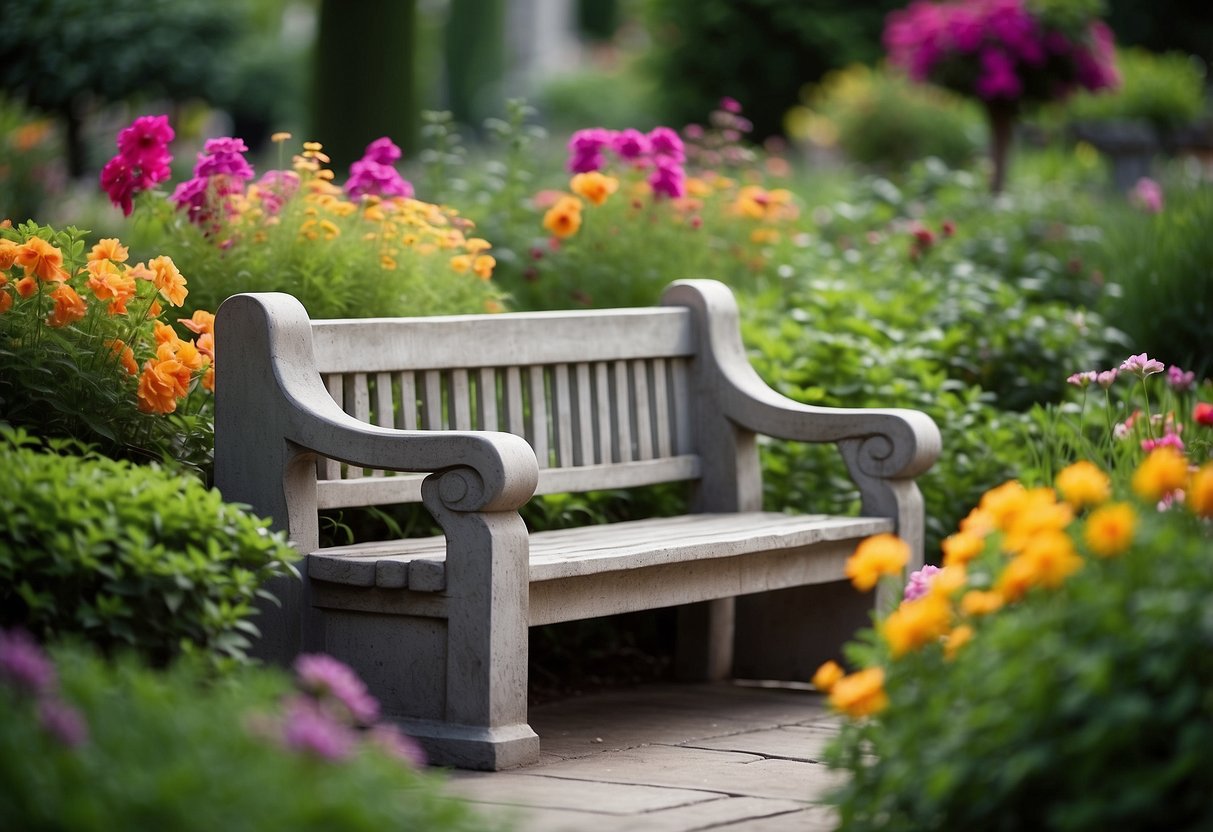
There are many design possibilities when it comes to choosing a cement bench for your garden. With so many styles and DIY options available, you can easily find or create a bench that suits your taste and complements your garden’s aesthetic. Exploring various cement bench ideas can help you discover the perfect addition to your outdoor space.
1) Incorporate a curved cement bench for a contemporary look

Adding a curved cement bench to your garden can give it a modern and stylish touch. These benches fit nicely into various garden layouts and can help define spaces.
You can find many designs, from simple and sleek to more ornate options. For example, a large swag edge concrete curved garden bench may suit a classic setting.
Curved cement benches are durable and low maintenance. They withstand weather changes and require minimal upkeep. This choice is both practical and visually appealing for any garden space.
2) Add pillows and throws to your cement bench for comfort and style
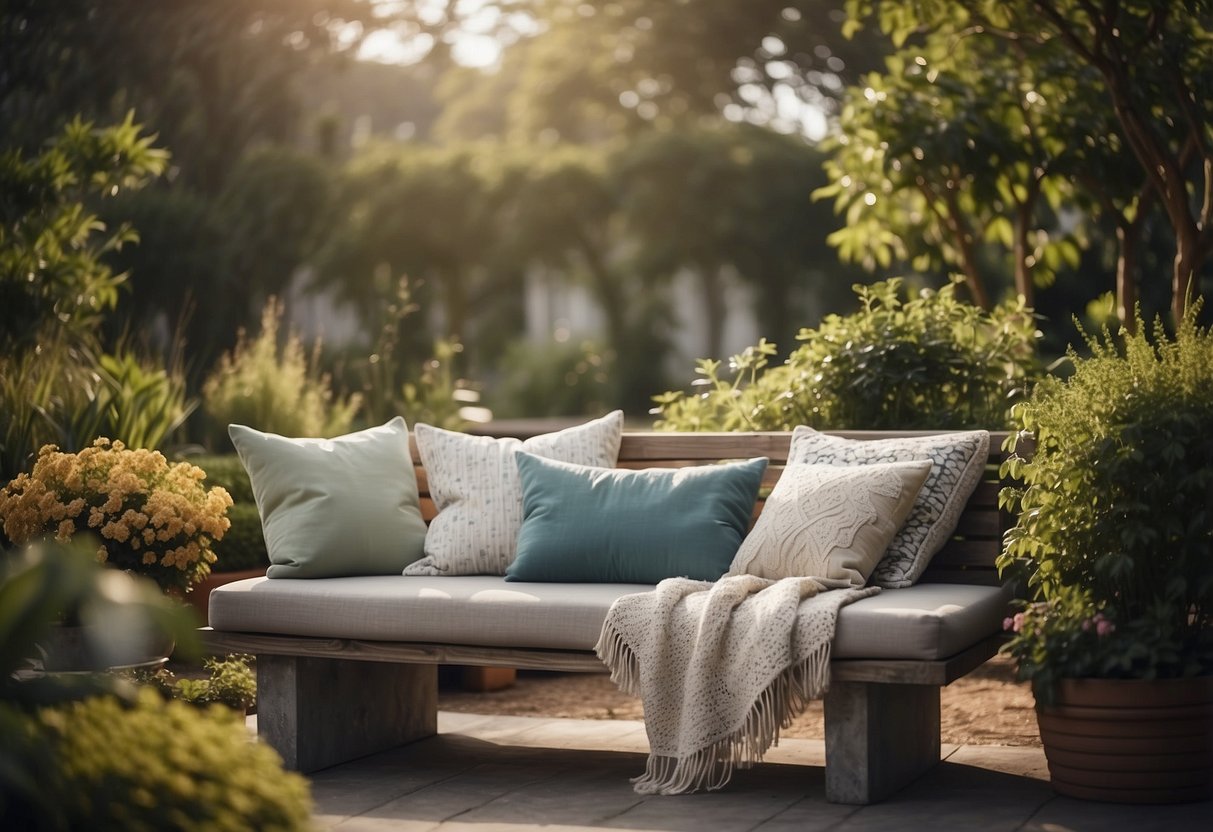
Adding pillows and throws can transform your cement bench into a cozy retreat. Choose colorful cushions that match your garden’s theme.
Remember to use weather-resistant fabrics to keep your pillows looking fresh. Throws can add an extra layer of comfort and warmth on cooler evenings.
Mix and match different sizes and patterns for a stylish look. Adding a few cushions and throws can make your cement bench inviting and comfortable.
3) Position the bench beneath a pergola for a shaded retreat

Place your cement bench under a pergola to create a cozy shaded spot. The overhead structure can protect you from the sun, making it a perfect place to relax during hot summer days.
Add climbing plants or vines to the pergola for a touch of nature. It will enhance the look and feel of your shaded retreat. You’ll love spending time here!
4) Use Colorful Cushions to Add a Pop of Color to the Cement Bench
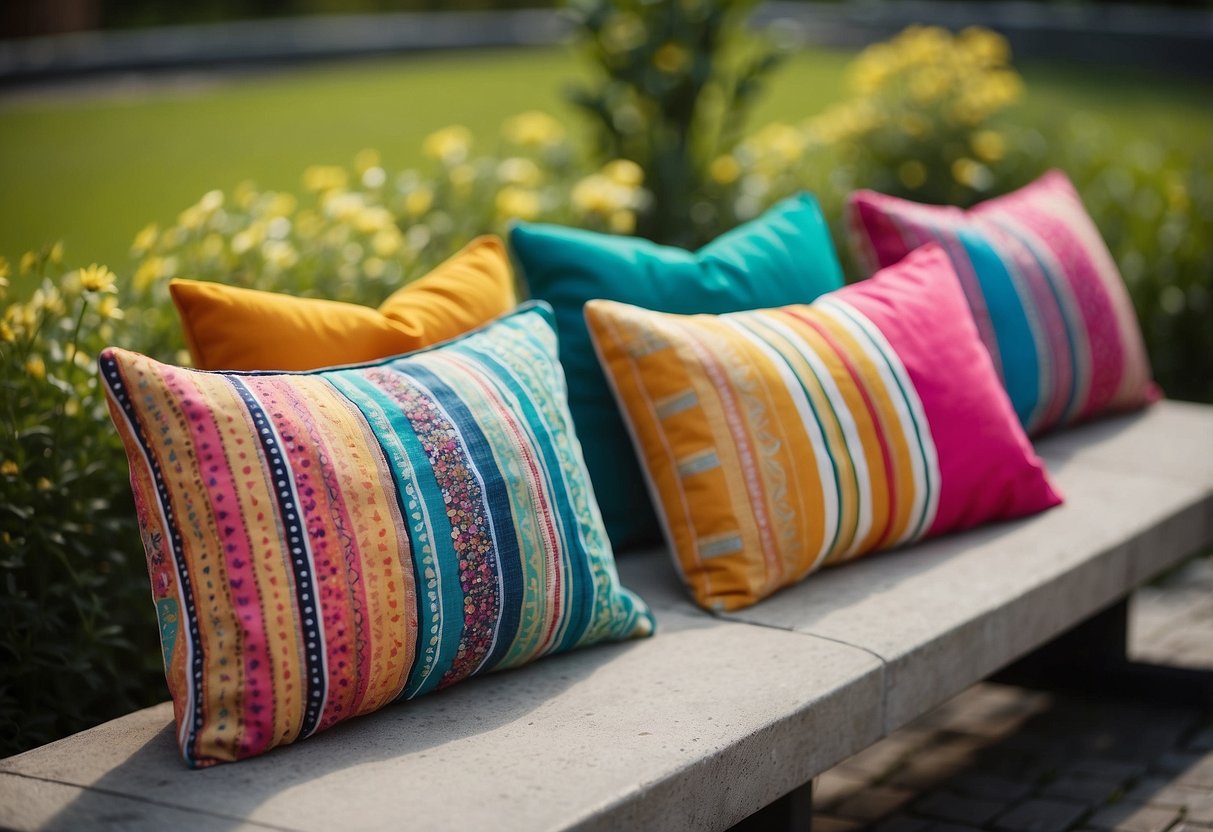
Brighten up your grey cement bench with colorful cushions. Choose cushions in shades like teal, orange, or magenta for an eye-catching look.
Mix and match patterns and textures to add even more interest. Floral or geometric designs can really make your bench stand out.
For a cohesive feel, tie the cushion colors to the plants or flowers in your garden. This simple addition will transform your bench into a cozy and inviting spot.
5) Place the cement bench near a water feature for a relaxing ambiance

When you place a cement bench near a water feature, it creates a soothing spot to unwind. The sound of flowing water can be very calming.
Imagine listening to a gentle stream while sitting on your bench. It’s a perfect way to relax after a long day.
If you have a pond or fountain, adding a bench nearby can enhance the area. The combination of water and a sturdy cement bench makes for a peaceful retreat you’ll love.
6) Utilize a cement bench as a dining area with a garden table

A cement bench can be a great addition to your dining area. Pair it with a sturdy garden table to create a cozy spot for meals outside.
Place the bench on a level surface so it’s stable and comfortable. Add cushions for extra comfort and style.
Consider placing the table and bench under a pergola or near shade to protect from sun and rain. This way, you can enjoy your meals outdoors in any weather.
7) Flank the cement bench with potted plants for a cozy environment
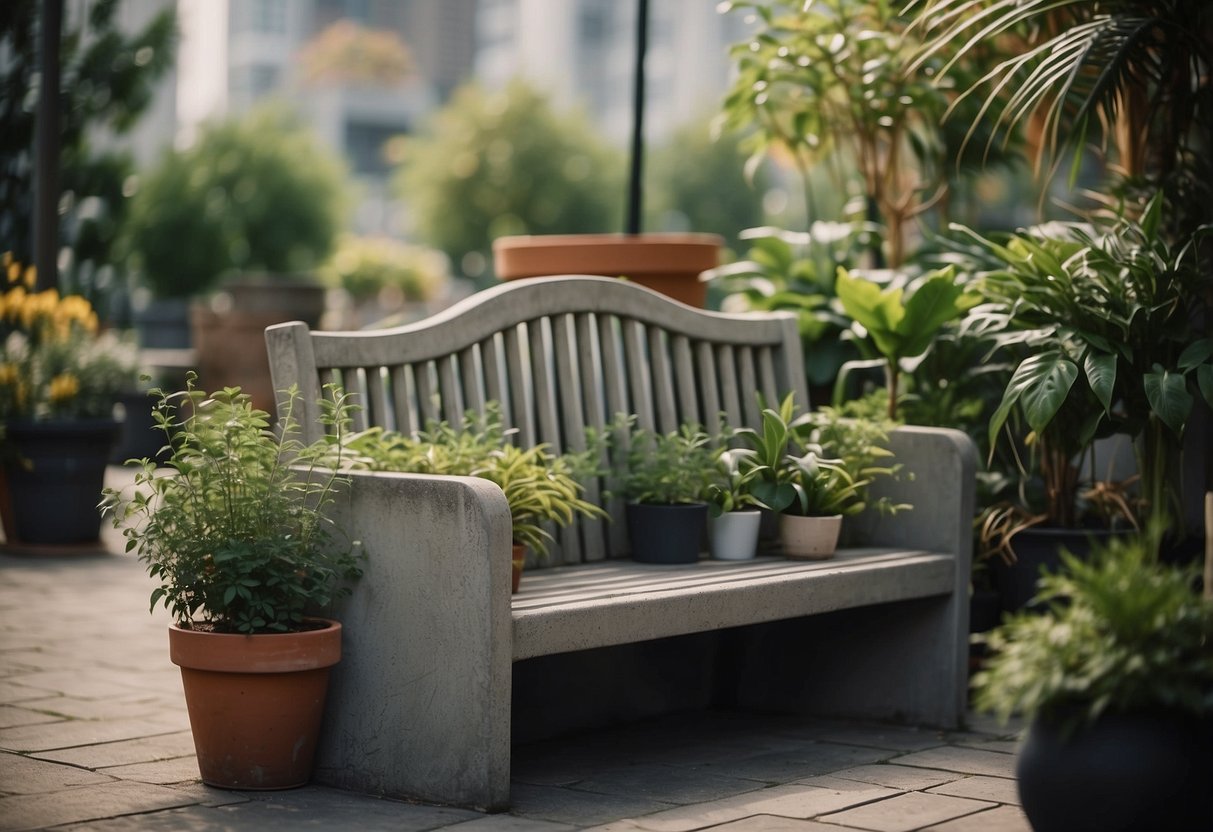
Placing potted plants around your cement bench adds a charming touch. Choose pots with bright flowers or lush green foliage to create a serene setting.
Arrange the pots in varying heights to give a layered look. This makes the space feel more inviting and lively.
Consider using aromatic plants. Scents like lavender or jasmine can enhance your relaxing experience.
Creative garden benches often feature plants to create a cozy atmosphere. Make sure to water them regularly to keep everything looking fresh.
8) Embed mosaic tiles into the bench for a unique artistic touch

Adding mosaic tiles to your garden bench can transform it into a colorful and unique centerpiece. Start by cleaning and priming the surface of your bench.
Choose tiles in various colors and shapes to create patterns or images. Use a strong adhesive to attach the tiles, and leave space for grout.
Once the adhesive dries, apply grout between the tiles. This not only holds them in place but also adds a finished look. Smooth the grout and clean off any excess for a polished result.
Learn more about mosaic garden benches at Running with Sisters or Mosaics Mostly.
9) Wrap LED string lights around the bench for evening charm
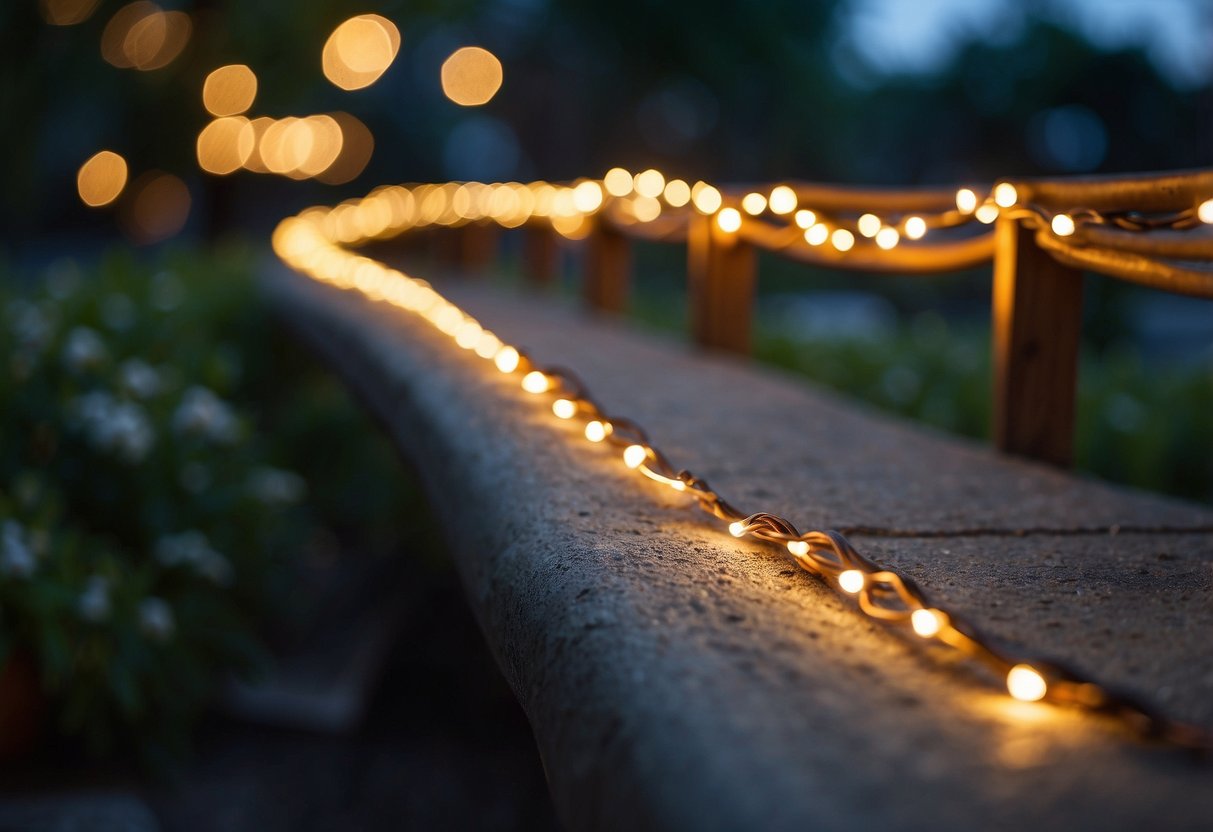
Wrap LED string lights around your cement bench to add a cozy glow in the evening. This simple idea makes your garden look magical after sunset.
Choose warm white or soft yellow lights for a soothing effect. Small LED lights work best and are easy to install.
Secure the lights around the backrest and legs of the bench. This creates a beautiful, twinkling design that highlights your garden seating. For more details, visit Gardeningetc.
10) Add a Backrest for Additional Comfort
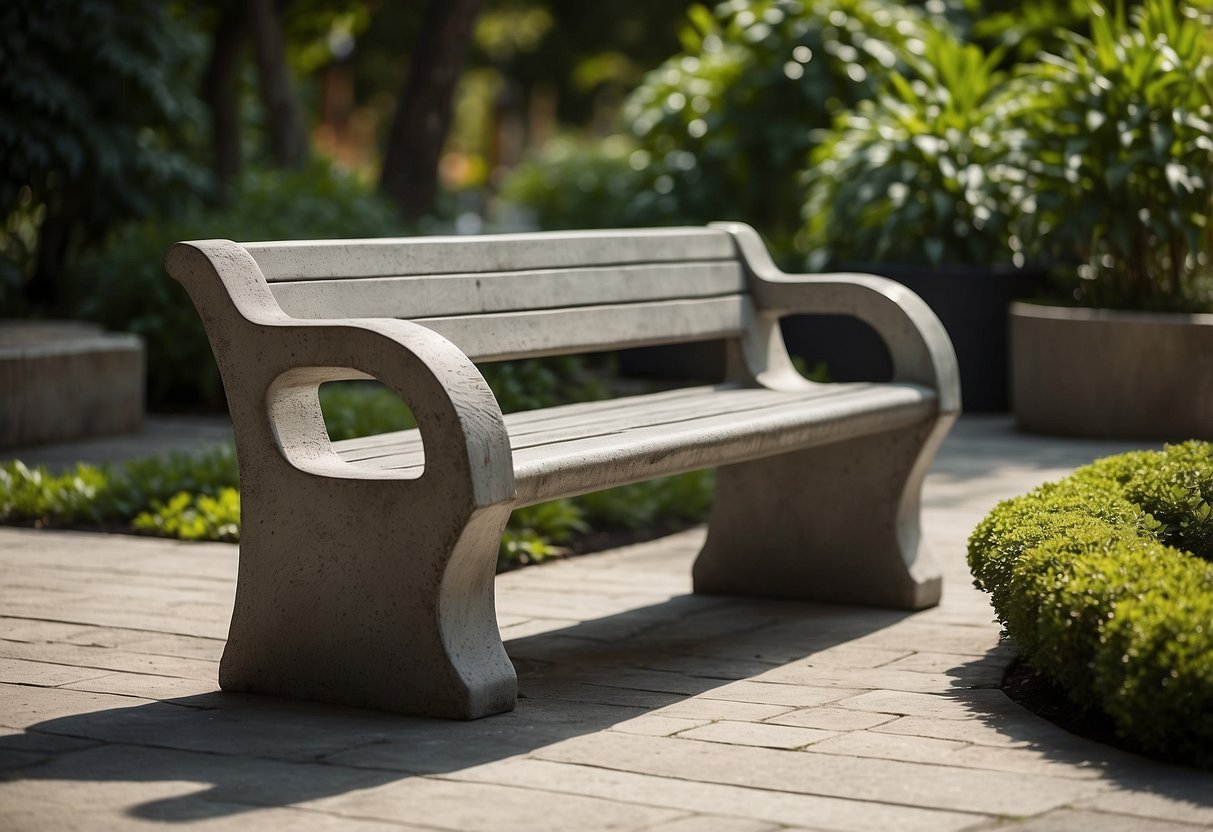
Adding a backrest to your cement bench can make a big difference in comfort. It allows you to sit back and relax for longer periods. This can be important if you like spending time in your garden.
Think about the style and height of the backrest. A higher backrest can provide more support, while a smaller one keeps the bench looking sleek. You can even decorate the backrest with cushions for extra comfort and style.
Benefits Of Adding A Cement Bench To Your Garden
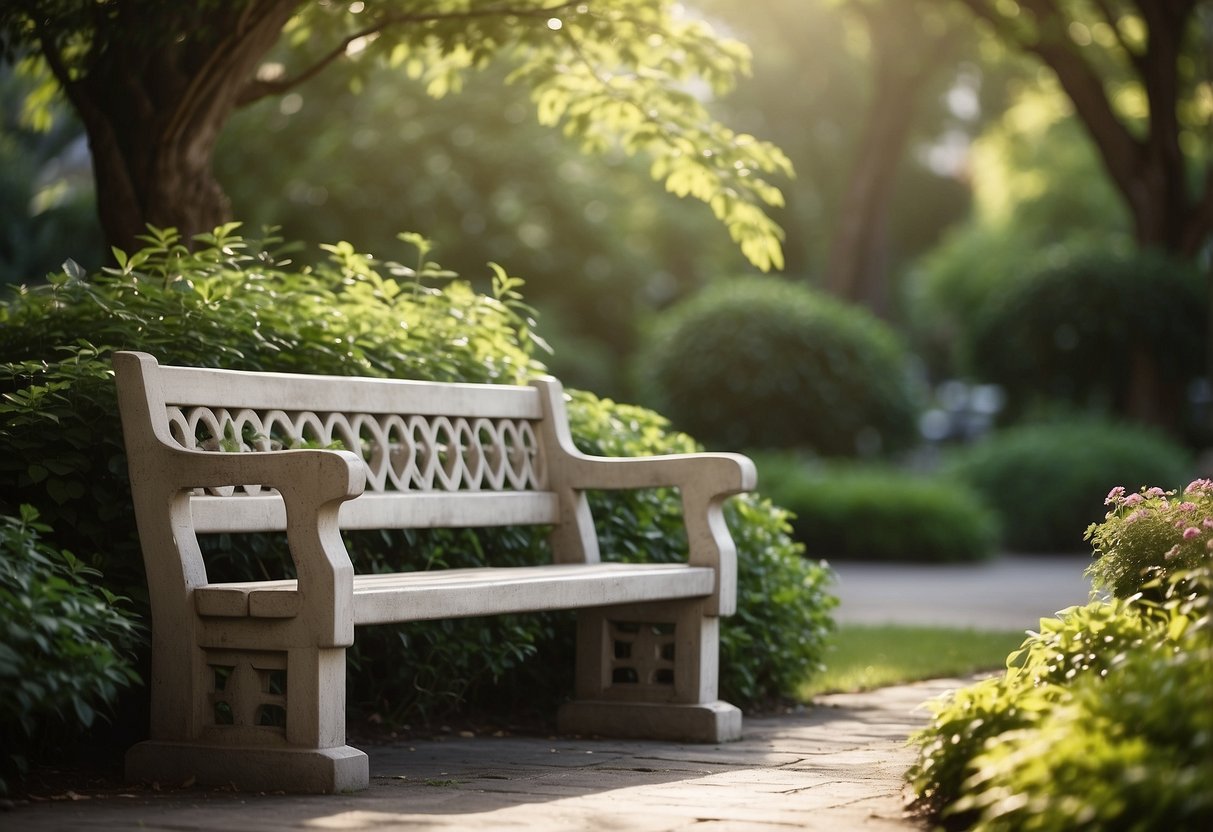
Adding a cement bench to your garden offers several advantages. These include longevity, minimal upkeep, enhancing visual appeal, and eco-friendliness.
Durability And Maintenance
Cement benches are known for their durability. They can withstand various weather conditions, from rain to intense sunlight, without getting damaged easily. This means you won’t have to worry about frequent replacements or repairs.
Because cement is a robust material, it also resists pests and rot. Maintaining a cement bench is straightforward. A simple wash with water and mild soap usually keeps it clean. Unlike wood, it doesn’t need regular treatments or coatings to stay in good condition. This makes it a practical choice for busy gardeners.
Aesthetic Appeal
A cement bench can be a stylish addition to your garden. It can serve as a focal point or blend seamlessly with natural surroundings. Cement benches come in various designs, from simple to intricate, helping you match or enhance your garden’s theme.
Many people choose to place plants around or on top of their cement bench to add color and life. Some benches even have built-in planters, allowing you to grow flowers or herbs directly. This polished look can make your garden feel more inviting and complete.
Sustainability
Cement benches are a sustainable option for garden seating. They are made from abundant natural materials like limestone and clay, which can be sourced responsibly. Additionally, cement benches last a long time, reducing the need for frequent replacements and minimizing waste.
You can also find eco-friendly cement options that incorporate recycled materials. These benches provide the same durability and aesthetic benefits while being kinder to the environment. Choosing a sustainable bench can help you create a greener garden that aligns with your values.
Design Ideas For Cement Benches

When planning to add a cement bench in your garden, there are several design ideas you can explore. These designs range from modern and minimalist styles to rustic and natural looks, and even ways to incorporate benches with your existing garden landscaping.
Modern And Minimalist Designs
Modern cement benches are perfect if you want a sleek, uncomplicated look. These benches often feature clean lines and geometric shapes. Materials like metal or glass can be combined with cement for a more contemporary feel. Some designs include built-in LED lights to create a striking visual effect at night.
Polished surfaces and neutral colors like gray or white add to the minimalist aesthetic. These benches not only serve as seating but also as statement pieces in your garden.
Rustic And Natural Looks
If you prefer a more organic vibe, rustic cement benches fit wonderfully in natural settings. These benches often mimic natural forms like stones or logs. Adding wooden elements can enhance the rustic look, making the bench blend seamlessly with your garden.
Uneven textures and earth tones work best for this style. Consider placing rustic benches under trees or among flower beds to create cozy, inviting nooks. They can serve as both a place to rest and a charming focal point in your garden.
Incorporating With Garden Landscaping
Cement benches can be a part of the overall landscape design in your garden. Integrate them with pathways, ponds, or pergolas. For example, you can place a bench along a low brick wall to create a layered look.
Benches can also be added near water features like fountains or small ponds for a sense of tranquility. By using plants and flowers around the bench area, you can soften the hard appearance of cement, making the space more inviting and harmonious. This integration helps the bench feel like a natural part of the garden rather than an isolated piece.







